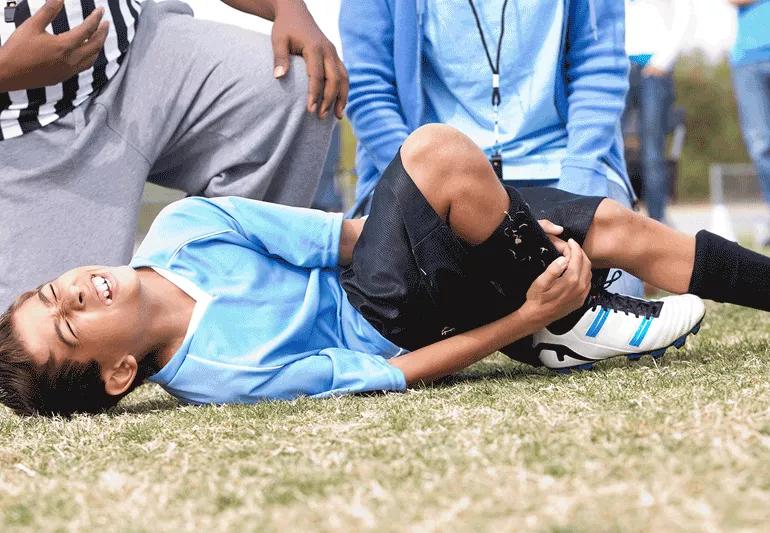Plus, six ways to tell if it’s a broken bone

“I can’t move my arm!” “It hurts when I walk!” If you have active kids, you’re used to them telling you (dramatically) about all their bumps and bangs. Most of the time, they brush it off and a few minutes later are back on the monkey bars or sliding into first.
Advertisement
Cleveland Clinic is a non-profit academic medical center. Advertising on our site helps support our mission. We do not endorse non-Cleveland Clinic products or services. Policy
But sometimes, it’s not just dramatics — you’re worried something may actually be broken. Since you haven’t developed X-ray vision eyes (well, YET), how can you tell if it’s a sprain or a fracture?
Orthopaedic specialist Michael Star, MD, breaks down the difference — and explains when it’s time to enlist a doctor’s help.
Put simply, fractures are broken bones. And broken bones come with one or more of these telltale signs:
A sprain is a ligament injury. Ligaments are the soft tissues that connect two (or more) bones at a joint, such as the ankle, knee or elbow.
While the signs of a sprain are often less obvious than fracture symptoms, there is some overlap:
Tenderness in your soft tissue (“If you look at the back of your wrist on the pinky side, there’s a bone that sticks out a little bit. You can also push down on the thumb side and feel a bone there. If you have a sprain, it will feel swollen and tender all over the wrist and not just on the bone parts,” explains Dr. Star.)
Advertisement
You can give the injury three days to improve if:
Follow the RICE acronym for the first 24 to 48 hours to give your child some relief:
“If the swelling gets better and it’s less tender within a couple of days, your child is most likely OK,” relates Dr. Star. “But if it doesn’t get better within two to four days, then you should see a doctor.”
When it comes to sprains, kids aren’t adults in miniature. While some adults can tough it out, Dr. Star advises against using that approach with children.
“Kids can injure something called the growth plate. That can affect how they grow over time. So parents should treat their children’s potential sprains more rigorously than they would their own,” says Dr. Star. “Any child who’s still growing should be evaluated to make sure they don’t have a fracture. And the only way to rule one out is to get an X-ray.”
Dr. Star also emphasizes the need to see a doctor if a significant cut or other wound accompanies the injury. “The wound may need to be addressed separately. It also may need to be treated more aggressively with antibiotics and cleaning.”
What type of doctor should you see? Any doctor that can provide a basic evaluation and take an X-ray. Medical facilities that provide these services include:
Advertisement
Learn more about our editorial process.
Advertisement

The emergency room is for serious medical issues; urgent care can help when you can’t get a quick appointment with your child’s doctor

Lice don’t jump — but they can spread with direct head contact

Some warts will clear up on their own, but others may need home remedies or medical care

Autism and OCD often co-occur, but distinguishing between them is crucial for successful treatment

An allergist can help you make a plan that includes information about what to do in case of an allergic emergency

Delays in growth, stomach aches and bathroom issues are all symptoms of this serious digestive condition

Lead with empathy, involve other caregivers, and teach them how insulin helps them live a long and healthy life

Focus on balanced meals, smart snacks, consistent eating and choice-driven conversations

The best parenting style balances enforcing rules and showing plenty of love

Tips include cutting back on sugar, focusing on exercise and managing stress

It can be harder to let go when you’ve invested time, energy and emotions — but it might be the healthier choice long term